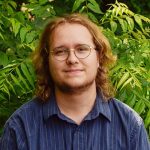A Suburban Wilderness: Dams, Spillways, Gathering Places, and Decay
When I think of suburbia, I imagine decay. In reading much of Rachel Carson’s writing, I can feel the tension she maintains in balancing optimism and grief for the natural environment. Throughout her body of work, she grapples with her concern for pesticides, ecological degradation, and loss of natural splendor. But in her concern, she also asks us to imagine a world of optimisms among the decay. What is worth saving? What is worth remaining curious about? And how can we maintain such curiosity?
I think about Rachel Carson’s ethic of curiosity in the context of Southern suburbia and my upbringing within it. In a landscape that seeks to exile, curate, and dominate nature, how can we maintain our sense of wonder and hopefulness for an environmental future that is sustainable, just, and ecologically minded?
Answering these questions became an exploration for me in revisiting and writing about my own past. I returned to sites of my upbringing in the Raleigh suburbs in North Carolina to find glimmers of curiosity that spur from my childhood and to capture them in photographs. I now write along with these photos in a sort of “literary montage” to work through my curiosity and tension towards suburbia. I ruminate on its future in the face of looming threats of ecological disaster bolstered by anthropogenic climate change and environmental injustice. In my ruminations I try to redefine my relationship with and understanding of suburbia as not siloed outside of nature, but rather deeply embedded within it.
Spillways and Dams

An image of a spillway in Northern Raleigh, outside of a suburban development known as Bedford, Pluska 2024
I think it was a late spring morning. A mist sprayed into the air, forcing me to wipe my face with my shirt. I was around nine or ten-years old standing on a cement ledge overlooking a spillway, seen below, a mechanism I now understand to regulate water from Falls Lake into the Neuse River. I was small, looking up at everyone around me who gazed into the distance. I couldn’t see what they were looking at, but I could hear the intense rumble of the water just beyond the forest of legs and rusty railing. I was anxiously excited. What was this place I found myself emersed in? I felt as if the concrete beneath me was moving like a boat on the high seas.
I was able to scoot to the front to lay eyes on what I heard so loudly. White capped water spun up and over rocks, spooling and unraveling into a furious rush. The water had an almost greenish-copper hue. Scum – or was it just foam? – floated on the surface until it met its demise in the swell. I remember this vividly. Standing near the concrete structure was sensational.
I live miles away from here now. But I return to it quite often when I visit home. The alienation I felt in that place, coupled with my memory of unease, attracts me. I remember that feeling of attraction throughout grade school. It brought a sense of wonder and excitement that juxtaposed my surroundings. I found it thrilling.
From time to time, I would come by and see people wading in the wetland area a few yards down river from the discharge point. It was a playground – an environment I thought of as natural. It was in the infringed forests of my suburban neighborhood that I cultivated my awe and love for the more-than-human world. Confined, upheld, and maintained by concrete. But peeking through were glimpses of what I thought of as natural.
Gathering Places
I found gathering places to be peculiar in this suburban wilderness. Benches scattered throughout the intertwining neighborhoods: some lining sidewalks, facing man-made ponds, or one another. I wondered if anyone ever sat on them. No one seemed to… So, what were they manufactured for. Who was meant to sit on them, what moments was one meant to have?
The name of my suburban wilderness was Falls River, an outpost of Raleigh, NC. I commuted 30 minutes downtown throughout elementary, middle, and high school, passing by these benches on my way to and from schooling. They were always empty.
A suburban wilderness curates space according to a prescribed meaning. A meaning that is rarely fulfilled. The benches, for example, are sedimented in time, unmoving and unwavering, a reassurance for a future that everyone there was promised will come. Those who live here bought these homes imagining the post-dinner walks they would take, the image of children swinging their legs, growing longer with age until they touched the ground. I think I sat on the bench shown above once when I was around 13 or 14 while visiting my friend Rachel who lived nearby. I only returned to it in preparation for writing this essay. Upon my return, the ground did not feel hallowed. I felt as though my experience of sitting on the bench did not stick, maybe even erased the moment I stood up.
At times, the benches had other statues in front of them resembling a fountain. Was this fountain ever flowing? Are there plans in place to fix them? Or will it forever remain dry? No matter their purpose, they always remained empty and obsolete. Yet despite their obsolescence they remained pruned to welcome their usage for those passing by.
Decay
Hidden among the developments, infrastructure, and infringed forests, I also found decay from an era long before. I would venture on the paved paths known as ‘greenways’ into the forest surrounding my home. There, I found a world of delipidated structures of train tracks and mills that looked so much different than the ones I grew up in and around.
One specific structure became a refrain in my memory of wandering in these woods. It was a brick building placed on a small cliff right above the river which could be accessed by walking a few feet off the paved path. Inside of the structure was a vast system of pipes, wheels, cranks, and levers, all of which were severely corroded. I would sit on a ledge and think about what used to flow through them. I thought about what may have been the purpose of each lever, crank, and wheel. I would imagine the people who operated them.
I used these structures as references for what might be in store in the future for the spillways and gathering places I described above. In a way, they were my first encounter with disaster. I found them beautiful and visceral. But they also instilled in me a sense of melancholy as I imagined my childhood home meeting the same demise, the benches turned upside down, the dams crumbing.
I saw the precarity of infrastructure and sought them out as they had been covered up by newer developments. For me, these structures of decay represent the future we will face if we are to ignore the warnings of our degrading environment and refuse to acknowledge our embeddedness within it.
The suburban wilderness of my childhood was equally alienating as it was inspiring. But I had to look closely between the cracks, holes, and rust in order to find such inspiration. In a way, my return to these spaces was to reenchant them with the awe and wonder I feel towards what we conventionally see as “nature,” as in the forests, rivers, and non-human species. Maybe if we are able to confront these concrete barriers, obsolete meeting places, and historicized decay, we can undo our separation from nature and learn to accept decay, growth, and harmony.
 Ben Pluska is an RCC National Environment Leadership Fellow as a Senior at Appalachian State University studying Sustainable Development and minoring in Film Studies. Ben is a research assistant under the mentorship of Dr. Rebecca Witter for the Environmental Justice Collaborative, a transdisciplinary research/activist project spanning multiple universities and environmental justice non-profits in North Carolina. The Co-Labs’ research focuses on how disproportionately impacted communities are getting to justice in the face of industrialized agriculture, energy development, and waste disposal in Eastern North Carolina.
Ben Pluska is an RCC National Environment Leadership Fellow as a Senior at Appalachian State University studying Sustainable Development and minoring in Film Studies. Ben is a research assistant under the mentorship of Dr. Rebecca Witter for the Environmental Justice Collaborative, a transdisciplinary research/activist project spanning multiple universities and environmental justice non-profits in North Carolina. The Co-Labs’ research focuses on how disproportionately impacted communities are getting to justice in the face of industrialized agriculture, energy development, and waste disposal in Eastern North Carolina.












